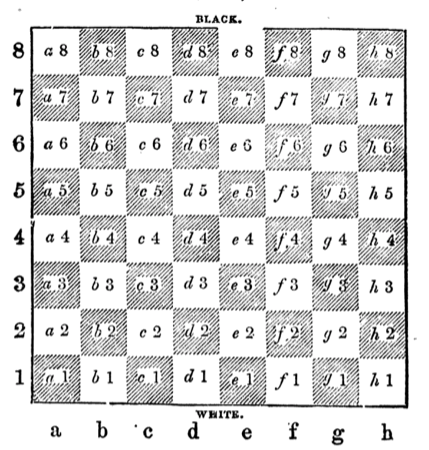The value of the pieces is a fundamental of chess. To know which side is better, the first thing to look for is a material imbalance. What follows is the most common assignment of point values:
- pawn = 1
- Knight = 3
- Bishop = 3
- Rook = 5
- Queen = 9
A pawn is worth 1 point. Bishops and Knights are worth 3 points each. A Rook is worth 5 points. A Queen is worth 9 points. The King has no value assigned to him as it cannot be captured.
The values given before are not exact and depend on the position, however they are often accurate enough to be used as an evaluation of the position. For instance, according to this model, if your Rook (5 points) gets captured, you have to get compensated with at least:
- One Rook (5 points)
- Or one Knight (3 points) and 2 pawns (1+1 = 2 points)
- Or one Bishop (3 points) and 2 pawns (2 points)
During a Chess game, having the value of the pieces in mind helps you deciding which piece exchange you should make (or not).
One very important point though: as useful as it is, the piece valuation system is only an approximation based on years of practice, it is in no way a mathematical value true in every case. Take it as a tool to help you make good decisions.
Basic exchanges
Similarly, you can exchange pawns, Knights, Bishops and Queens with your opponent without changing the material balance. The next diagram shows an example of an exchange of minor pieces.
The next position shows an example of exchange poorly managed by White.
The purpose of having a material advantage
You may say “Very well, I know how much each piece is worth, but how does this connect with the final objective of the game, which is to checkmate ? Why is the material balance so important ?”
My answer will be simple: you may end some of your games with an early (and beautiful) checkmate after a strong attack, but most of your games will be decided at the end of a phase that we call the “endgame”.
The key of the ending phase is to be able to promote your pawns before your opponent. Basically, the first player managing Queening a pawn often wins the game.
The value of the pieces is something important in Chess, very important ! To convert this position, you have to know basic King and pawn endgames and how to checkmate with one Queen.
Now the next section shows the limits of the piece valuation systems.
Fine-tuning the piece valuation system
The values 1-3-3-5-9 given in this article will give you a good enough estimate of the value of the pieces in 95% of the situations. However, some cases deserve a finer analysis.
Rook VS Knight or Bishop
The first interesting case is the difference between the Rook and the Bishop or the Knight. To confuse beginners, this difference is often called the Exchange. According to the figures given above, the value gap between the Rook and the Bishop/Knight is exactly two pawns. In reality, according to the position, the gap can be one or two pawns.
For this reason, some fine-tuned systems value the Knight and the Bishop at 3,5 points each, and the Rook at 5 points. Others assess the Knight or the Bishop at 3 points, and the Rook at 4,5 points. What matters here is that usually the difference is about 1,5 points worth.
Rook VS two minor pieces
This section is about the exchange between the Rook and 2 Knights/ one Knight and one Bishop/ 2 Bishops. According to the valuation above, One Rook (5 points) and one pawn (1 points) should be enough against one Knight (3 points) and one Bishop (3 points).
However, in most cases, you need to get 2 pawns in addition to the Rook to keep the material balance. For instance, playing the following opening moves with White would be unwise:
Queen VS 2 Rooks
The same can be said about Exchanging two Rooks (10 points) against the Queen (9 points). There is theoretically a one-point gap but this is usually a balanced exchange.
Values depend on the position: Knight VS Bishop
No value is absolute. The most obvious example I can take is on the Bishop VS Knight trade: according to our model, this is a perfectly balanced exchange, as they are 3 points-worth each.
However there are positions in which the Knight deserves a higher value than the Bishop. This is the case with closed positions for instance.
On the opposite, the Bishop is often more powerful is open positions, and in particular when some weaknesses can be targeted on both wings.
So we have found another loophole in the system: this valuation depends on the type of the position. But there is more !
Valuations change in the endgame
The evaluation not only changes according to the nature of the position but also according to the phase of the game we are into ! Namely, if we are in the endgame, the valuation of the pieces can change drastically.
As a first example, we will look at the case of the pawn. According to our valuation system, giving up a Knight to capture 2 pawns is bad.
Chess Pieces Value – Conclusion
This clarification concludes this article about the piece valuation system. This system provides you with a framework to help you choose which exchange to accept and which piece to capture.
To go further and take advantage of this article, it is important that you master the following ideas:
Good luck in your journey to become a better Chess player and see you in another article !



